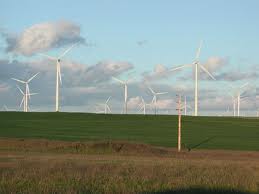Air Pressure: the force of air molecules exerted on a given area; the weight of the atmosphere as it pushes down upon Earth’s surface
-Exerted in all directions because air molecules move in all directions.
–Why aren’t we crushed by its weight?
Because as the air is pushing in all around us, there are forces inside our body pushing out with equal force!
-You can feel this as you ascend in an airplane! Your eardrums pop because air pressure decreases w/altitude and your ears are still pushing out with the same internal force, causing your eardrums to pop!
Barometer: the instrument used to measure air pressure
-Units = millibars
-average air pressure = 1013 millibars
Why does air pressure change?
Three reasons why air pressure changes:
- Elevation: As elevation ^, air pressure (down)
Why? Less air above you pushing down!
-Average air pressure at Mile High Stadium = 835 millibars
- Temperature: As temp. ^, air pressure (down)
Why? As air is warmed, its molecules move farther apart, ↓ing its density! As air is cooled, its molecules move closer together, ^ing its density!
- Humidity: As humidity ^, air pressure (down)
Why? Water molecules have less mass than oxygen or nitrogen atoms!
*We can study the changes in air pressure to give us a simple and somewhat accurate way of forecasting the weather!
-For example:
*A decline in air pressure often signals the approach of warmer, more humid air, probably containing rain or snow!
*An ^ in air pressure often signals the arrival of cooler, drier air w/o rain or snow! (i.e.- Nice weather!)
-Well, meteorologists use lines called isobars to join areas that have the same air pressure!
Isobars that are close together indicate a strong pressure gradient and strong winds.
This arrow indicates the direction of wind flow if there were no Coriolis effect. Wind wants to flow from an area of high-pressure to an area of low pressure.
Isobars that are far apart indicate a weak pressure gradient and light winds.
-If air pressure goes up or rises towards the center of the closed isobars, this area is called a high-pressure area or high.
-If air pressure goes down or lowers towards the center of the closed isobars, this area is called a low-pressure area or low.
-Just like in Chapter 3, closely spaced isobars or lines indicate a steep change in air pressure, and we can calculate this change using the same equation we’ve used before!
Pressure gradient = pressure change (millibars)/ (distance (miles))
*Example: If the air pressure increases 300 millibars over a 10 mile distance, what is the pressure gradient?
300 mb / 10 miles = 30 mb/mile
*Example: The distance from Burbank to Calabasas is 20 miles. If the air pressure in Burbank is 1000 millibars and the air pressure in Calabasas is 800 millibars, what is the pressure gradient? In which town is the air warmer and more humid? Which town is likely to have nicer weather?
1000 mb – 800 mb = 200mb 200 mb / 20 miles = 10 mb/mile

